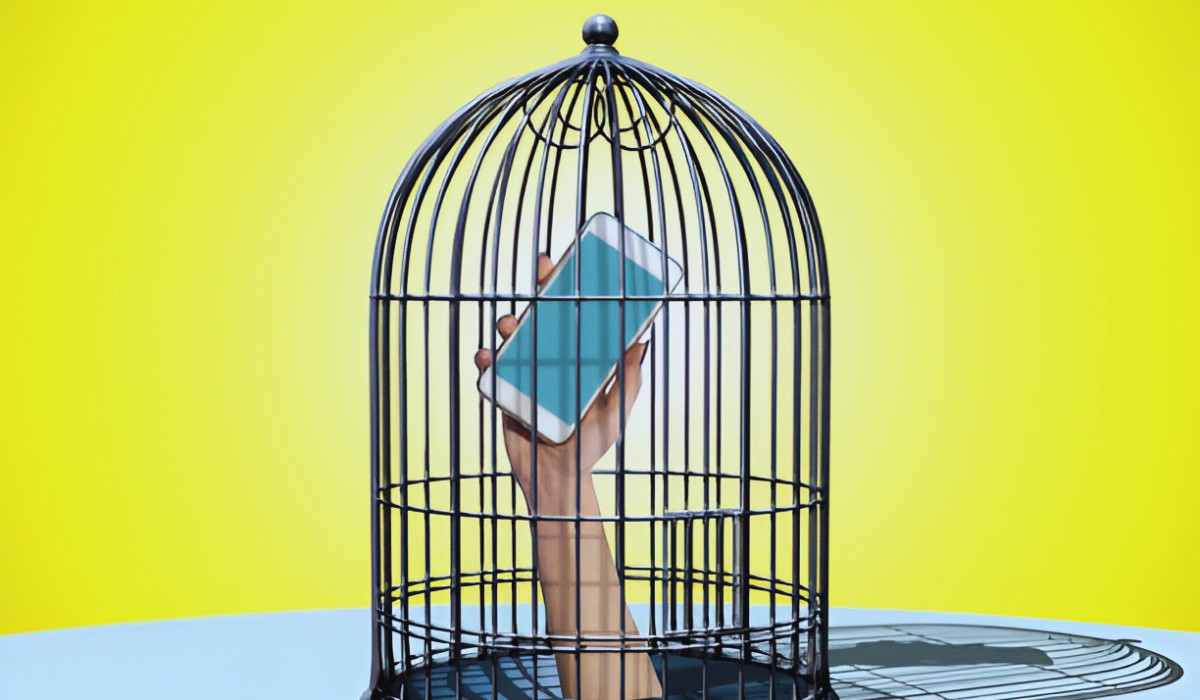
Cyberfasting: The Digital Detox Revolutionizing Mental Health and Reconnecting Lifestyles in 2025
by Sweta Das in Health & Wellness on July 2, 2025The Increasing Demand for Digital Breaks in the Hyper-Connected World
The year 2025 is the most technologically connected world in history, yet the majority actually feel more frustrated mentally due to the challenge of using this technology every day. The reasons are excessive utilization of social media e.g. the latest notifications and work emails all around the clock.
Digital fatigue can be perceived as an epidemic among people, which is not only increasing but has even become a taboo topic that no one wants to talk about. The issue, however, is swiftly being addressed by a new practice known as cyberfasting, a sensible answer to the psychological and emotional side effects that may come with screen addiction, as well as a tool that ensures the seamless coexistence of the human psyche and new technologies.
Cyberfasting is not just a fad; it is a revolution that provides people with an opportunity to separate from their mobile devices for a while. It is a necessary measure for those persons who want to concentrate on their renewal by taking out themselves from digital resources for a certain period. Due to increasing digital demands, this practice is the new wellness influence.
What Is Cyberfasting?
Cyberfasting is the conscious decision to stay away from any and all digital gadgets, be it the cell phone, the computer, or the social media handles, for a certain period. The philosophy of the whole action lies in the retreat of mental distractions through reducing the noise that technology is usually accompanied with. The idea of abstaining from something that is usually overdone or overused to your mind refreshing and focusing on positive aspects of mental health and limiting the negative aspects of personal well-being is shared by both food and cyberfasting.
This movement is a direct challenge to the current trend wherein people find it almost compulsory to stay connected all the time. The movement doesn’t want to do away with technology entirely but rather, it intends to get people to be masters of their screen time so they can be healthier and more deliberate in their living.
Cyberfasting’s Impact on Mental Health: The Stress-Relief Solution
In a world where people are increasingly reliant on smartphones and digital devices, the idea of cyberfasting is breaking as a very mighty cure for the anxiety and stress caused by constant online engagement. Recent studies have shown that people who are addicted to digital gadgets can be very much stressed, fearful of anxiety disorders, and even suffer from depression.
Further, pervasive viewing of news online, the ever-rising comparison on social media, and the perception that an individual should always be “available” have led to an increase in mental health issues.
Cyberfasting offers strong relief. Disconnecting for several hours, days, or even weeks will reduce an individual’s screen exposure and will, thus, give an opportunity to recover their mental state. This skilling down in activities goes hand in hand with the inner reflection moments that the practice gives the individuals, thereby focusing on their own mental well-being as opposed to being overwhelmed by external distractions.
Through cyberfasting, people, mostly those who are suffering from sleep disorders, have experienced significant changes. It has been proven that blue light, a wavelength emitted by a screen, is the real enemy of a night of deep sleep, as it significantly lowers the melatonin, which is a hormone that controls the sleep-wake cycle. Succinct to say, cyberfasting paves the way for a natural break from the vicious circle of sleeplessness due to excessive screen time.
Reconnecting with the Real World: Cyberfasting as a Lifestyle Change
Aside from the mental health benefits, the practice of cyberfasting is transforming the way we live and change our daily routines. Many people consider the act as a launchpad for a comeback to their offline hobbies and/or as an opportunity to meet loved ones and spend good leisure time with them.
The shift in mindset from being hooked to one’s mobile device screen all the time to actually enjoying one another’s company offline is what the concept of cyberfasting is trying to put forth. It is indeed real-world activities that are not only the source of the above-mentioned qualities but also those that can lead to creativity, productivity, and the establishment of more meaningful human connections.
Cyberfasting is this great idea, but it is more than that when things get going, and people keep on with that. The regular practice of cyberfasting makes people talk to one another more openly and with purpose. Without the digital device-induced interruption, individuals can fully engage in the conversation and thus build up the relationship.
For instance, taking a long walk in the countryside, reading a book in a single sitting, or just having a peaceful dinner without the disturbing impact of the screens are the ways cyberfasting helps the individuals find the path that leads to the off-the-air life.
In the age of time scarcity, it is essential to be away from the digital world to focus and be more productive occasionally. The method of “technology and management” that one uses guarantees that productivity is actually there being obtained from every person.
The individuals without the pressing social media issues and the endless notifications on mobile devices constantly accompanying them bend their concentration toward the issues that are no longer issues for them personally and of course strictly, are still professional.
A New Trend Taking Over: Cyberfasting’s Growing Popularity
The switch to cyberfasting is a fast-growing fashion in the United States. In a world seen to be overloaded with the harmful effects of technology, as the growth of the practice is becoming more than recognized, the percentage of people who are moving to cyberfasting for mental health protection is increasing.
An example of digital detox for weekends or a whole week of giving up screens for a certain period of time, and this practice is now popular among all the age groups, be those tech gurus or students.
Besides, digital wellness tools and platforms are also on the rise assisting people in managing their screen time well and carrying out the roles of accountability as well as tracking device usage in apps to suggest good behaviors which are consistent with the principles of cyberfasting.
Of late, this cyberfasting lifestyle has been a hit with many individuals because it creates a sense of balance in their spiritual and personal lives. Digital detox has become part and parcel in the religious circles where most of the spiritual practices are observed and that has been a great freedom moment for the individuals to take time off and ponder. The fast acceleration in the modern age of cyberfasting hints at one thing; that people are not just adopting it as a passing fad but rather a complete paradigm shift towards healthy and mindful life.
Cyberfasting: Getting Started in It!
Although the idea of cyberfasting may look like a piece of cake, actually, starting is not as complicated as you might think. Here are some small steps that can help you ease into the practice of cyberfasting:
- Begin with Short Periods: Gradually start creating awareness in you by taking shorter breaks such as not using your phone or checking social media for a few hours daily. When you feel that you are comfortable then you can extend the fasting period little by little.
- Create Limits: Make intervals during the day or before bed as the times when you do not use any gadgets and instead only go offline which will engage in activities related to the promotion of your well-being.
- Find Offline Interests: If you would like to increase the time you spend without using your laptop or PC, now maybe the perfect time to invest it in the hobbies that lie idle such as reading, painting, and playing musical instruments.
- Network with a Community: Many people get to experience the best by not just practicing cyberfasting alone but also joining social groupings, or communities that have, first of all, consented and secondly, encouraged their move towards digital detoxing.





